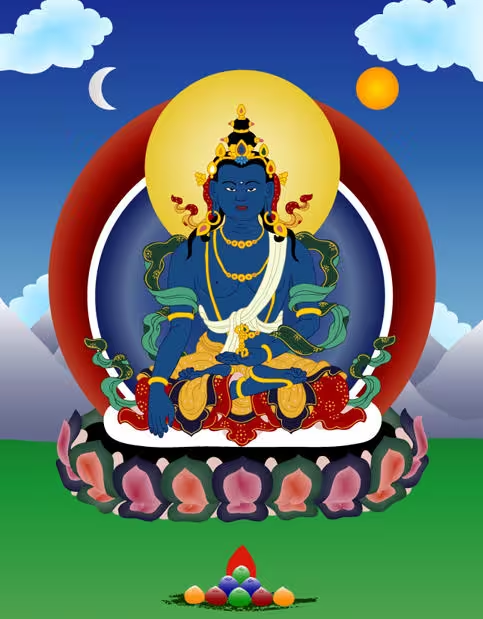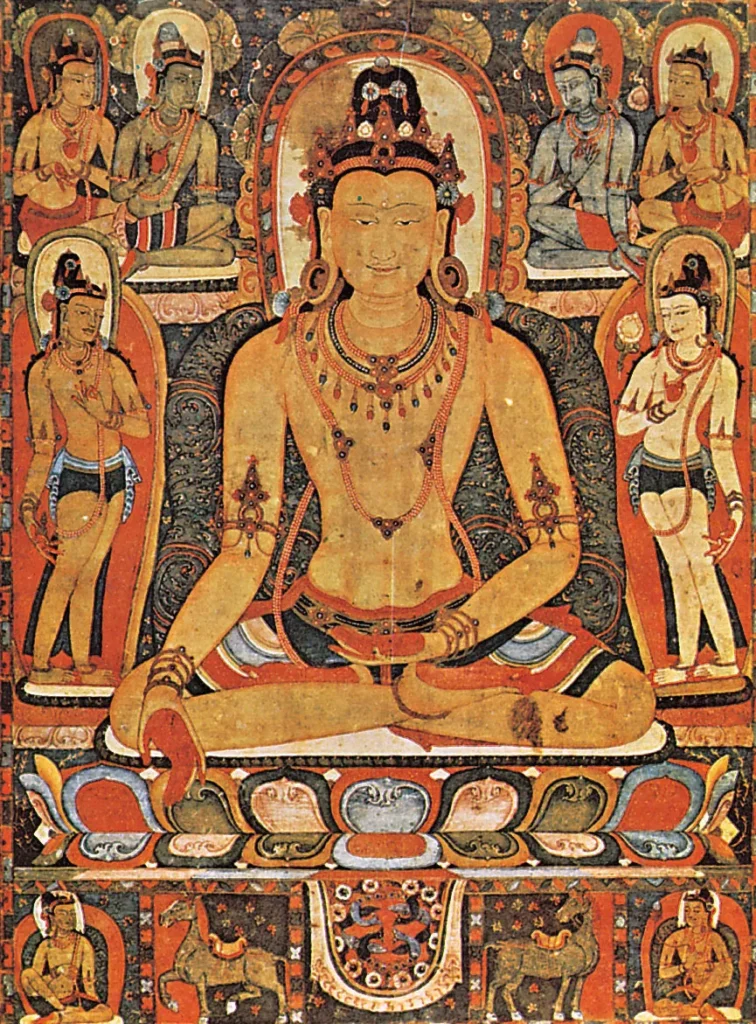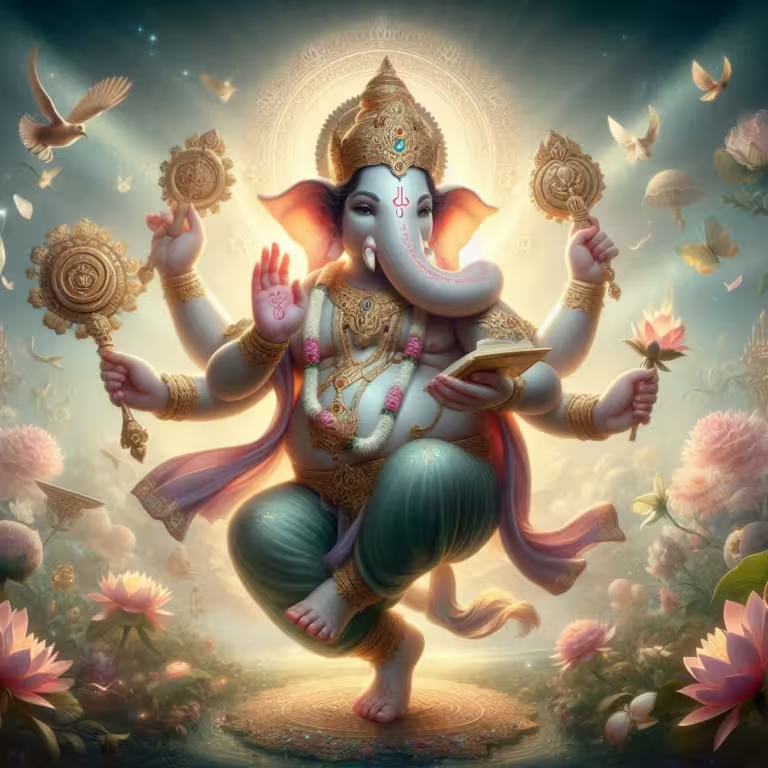Introduction
Akshobhya Bhairava is a powerful and revered form of Lord Bhairava, who represents the unshakable aspect of Shiva. Akshobhya Bhairava is worshipped in both Hindu and Buddhist traditions, symbolizing immovable strength, steadfastness, and transcendence beyond duality. This stotra, or hymn, glorifies Akshobhya Bhairava’s attributes, offering a path to spiritual enlightenment, peace, and liberation from fear.
In Hinduism, Akshobhya Bhairava is associated with the Dasa Mahavidyas, particularly Tara, one of the ten wisdom goddesses. In Vajrayana Buddhism, Akshobhya is one of the five Dhyani Buddhas, representing the mirror-like wisdom that perceives reality as it is, without attachment or aversion.
This blog delves into the meaning, benefits, and significance of the Akshobhya Bhairava Stotra, exploring its roots in both Hindu and Buddhist traditions.
Table of Contents
- Akshobhya Bhairava: The Unshakable Lord
- The Significance of Akshobhya Bhairava in Hinduism
- Akshobhya Bhairava in Vajrayana Buddhism
- Akshobhya Bhairava Stotra: A Detailed Translation and Interpretation
- The Benefits of Chanting Akshobhya Bhairava Stotra
- Conclusion
1. Akshobhya Bhairava: The Unshakable Lord
Akshobhya Bhairava, one of the most formidable aspects of Lord Bhairava, embodies the qualities of unwavering resolve, fearlessness, and absolute stability. His name “Akshobhya” literally means “the unshakable” or “the immovable.” As an emanation of Shiva, Akshobhya Bhairava is invoked to destroy negative energies, remove obstacles, and bestow peace and fearlessness upon his devotees.

2. The Significance of Akshobhya Bhairava in Hinduism
In Hinduism, Akshobhya Bhairava is closely linked to the worship of the Dasa Mahavidyas, particularly Tara. Tara is the second Mahavidya and is often associated with the power of speech and the protection of devotees from dangers. Akshobhya Bhairava, as her consort, represents the active force that aids in overcoming life’s challenges and transforming ignorance into wisdom.
This connection with the Mahavidyas highlights Akshobhya Bhairava’s role as a guardian and protector, guiding devotees through the complexities of the material world and leading them towards spiritual liberation.
3. Akshobhya Bhairava in Vajrayana Buddhism
In Vajrayana Buddhism, Akshobhya is one of the five Dhyani Buddhas, representing the eastern direction and the element of water. Akshobhya’s mirror-like wisdom reflects all phenomena without distortion, symbolizing a state of perfect equanimity. As a transcendent Buddha, Akshobhya transforms hatred and anger into wisdom, offering a path to enlightenment.
The worship of Akshobhya in Vajrayana Buddhism emphasizes the importance of maintaining a calm and centered mind, unshaken by the dualities of the world. This aspect of Akshobhya resonates deeply with the qualities of Akshobhya Bhairava in Hinduism, where he is also seen as a protector and a guide through the turbulent waters of life.
4. Akshobhya Bhairava Stotra: A Detailed Translation and Interpretation
वेद सन्नुत रुद्रं च तारादेवी महापतिं ।
नीलकण्ठं सदानंदं अक्षोभ्य भैरवं भजे ।।
कालकूट विषं पानं दुःखातीतं सदासुखं ।
अचंचलं निराकारं निर्विकारं शिवं भजे ।।
जटाजूट कपर्दिने सहस्र सूर्य तेजसे ।
महा सौन्दर्य शंभवे अक्षोभ्याय नमो नमः ।।
रक्ताक्षः नीलवर्णश्च तारा शीर्षोपरि स्थितः ।
विद्युत् कोटि समप्रभः अक्षोभ्य भैरवो महान् ।।
अग्निकांतिं महाकांतिं सर्वसुर नमस्कृतं ।
सर्वासुर समाराध्यं अक्षोभ्यं प्रणमाम्यहं ।।
सुरासुर महाविभुः वेदेश्वरः महोज्वलः ।
तारादेवी प्रकीर्तितः अक्षोभ्यः सर्वनायकः ।।
बौद्धमत महागुरुं वज्रयान महाप्रभुं ।
तथागतं महादेवं अक्षोभ्यर्षिं नमाम्यहं ।।
आत्मभाव सुवर्धकं देहभाव निवारकं ।
परमशांतिदं परं भयनिवारकं भजे ।।
प्राक् दिशाधिपतिं हरं सर्वसिद्धिप्रदं शिवं ।
सुख भोग प्रदं भवं अक्षोभ्य भैरवं भजे ।।
सर्वेश्वरः परब्रह्म ब्रह्मज्ञान प्रदायकः ।
सर्वदुर्गुण नाशकः अक्षोभ्यः परमेश्वरः ।।
प्रज्ञानदं च मुक्तिदं व्यामोहघ्नं च सिद्धिदं ।
मायादोष निवारकं अक्षोभ्यं प्रणमाम्यहं ।।
नागेन्द्र रूप गोचरं विश्ववंद्यं महामुनिं ।
गजवाहन संचारं सिद्धारूढं सदा भजे ।।
निस्संगाय विमुक्ताय द्वंद्वातीताय धीमते ।
सर्वातीताय वीराय अक्षोभ्याय नमो नमः ।।
निश्चलं निर्मलं सत्यं विमलं व्यापकं सर्वं ।
अखंडं निर्गुणं पूर्णं अक्षोभ्यं प्रणमाम्यहं ।।
The Akshobhya Bhairava Stotra is a powerful hymn that extols the virtues of Akshobhya Bhairava. Below is a detailed translation and interpretation of the stotra:
- Verse 1: “I worship Akshobhya Bhairava, the Rudra praised by the Vedas, the great lord of Tara Devi, the ever-joyful, blue-throated, and always blissful one.”
- Interpretation: This verse introduces Akshobhya Bhairava as the consort of Tara Devi, highlighting his joyous and blissful nature, despite his formidable appearance.
- Verse 2: “He who drank the poison of Kalakuta, transcending sorrow, ever blissful, unchanging, formless, and devoid of attributes—Shiva, I worship.”
- Interpretation: Akshobhya Bhairava is depicted as the embodiment of Shiva, who transcends all forms of suffering and remains unshaken in the face of adversity.
- Verse 3: “With matted locks, shining with the brilliance of a thousand suns, the embodiment of supreme beauty—salutations to Akshobhya Bhairava.”
- Interpretation: This verse praises Akshobhya Bhairava’s radiant beauty and strength, comparing him to the brilliance of a thousand suns.
- Verse 4: “With red eyes and a blue complexion, standing atop the head of Tara, shining with the brilliance of millions of lightning bolts, Akshobhya Bhairava is great.”
- Interpretation: Akshobhya Bhairava’s fierce appearance is described, emphasizing his power and his connection to Tara.
- Verse 5: “He who shines with the brilliance of fire, worshipped by all gods and revered by all demons—I bow to Akshobhya Bhairava.”
- Interpretation: This verse highlights Akshobhya Bhairava’s universal worship and his ability to transcend the dualities of good and evil.
- Verse 6: “The great lord of gods and demons, the lord of the Vedas, the illustrious one—Akshobhya, the leader of all, is celebrated by Tara Devi.”
- Interpretation: Akshobhya Bhairava is acknowledged as a supreme deity, worshipped by both gods and demons alike.
- Verse 7: “The great teacher of Buddhism, the lord of the Vajrayana, the Tathagata, the great god—salutations to Akshobhya Rishi.”
- Interpretation: This verse recognizes Akshobhya Bhairava’s significance in Vajrayana Buddhism, where he is revered as a great teacher and deity.
- Verse 8: “The one who enhances the state of self-realization and eradicates the identification with the body—the supreme peace-giver, I worship the fear-destroying one.”
- Interpretation: Akshobhya Bhairava is praised for his ability to guide devotees towards self-realization and peace, free from fear and attachment.
- Verse 9: “I worship Akshobhya Bhairava, the lord of the eastern direction, who bestows all perfections, who grants the enjoyment of pleasures, and who embodies Shiva.”
- Interpretation: This verse associates Akshobhya Bhairava with the eastern direction, aligning him with Akshobhya Buddha in Vajrayana Buddhism.
- Verse 10: “The lord of all, the supreme Brahman, the giver of Brahma knowledge, the destroyer of all evil traits—Akshobhya, the supreme lord.”
- Interpretation: Akshobhya Bhairava is hailed as the supreme lord who bestows wisdom and destroys negativity.
- Verse 11: “The giver of wisdom and liberation, the destroyer of delusion, the remover of the faults of illusion—I bow to Akshobhya.”
- Interpretation: This verse emphasizes Akshobhya Bhairava’s role in granting wisdom and liberation from the bonds of illusion.
- Verse 12: “I worship the great sage, visible in the form of a serpent, revered by the world, who travels on an elephant—always mounted on his Siddha vehicle.”
- Interpretation: Akshobhya Bhairava is depicted as a powerful sage, revered for his mastery over both the material and spiritual realms.
- Verse 13: “Salutations to Akshobhya, the unshaken one, free from attachment, liberated, transcending dualities, and wise beyond all.”
- Interpretation: The stotra concludes by praising Akshobhya Bhairava’s qualities of non-attachment, wisdom, and liberation.
- Verse 14: “I bow to Akshobhya, who is unshaken, pure, truthful, spotless, all-pervading, eternal, and beyond attributes.”
- Interpretation: This final verse reiterates Akshobhya Bhairava’s transcendence beyond all limitations, embodying the ultimate truth.
5. The Benefits of Chanting Akshobhya Bhairava Stotra
Chanting the Akshobhya Bhairava Stotra brings numerous spiritual benefits, including:
- Fearlessness: The hymn invokes the unshakable nature of Akshobhya Bhairava, helping devotees overcome fear and anxiety.
- Peace of Mind: The stotra promotes inner peace by connecting the devotee with the tranquil energy of Akshobhya Bhairava.
- Spiritual Growth: Reciting the stotra enhances spiritual awareness, guiding the devotee toward self-realization and liberation.
- Protection: Akshobhya Bhairava is a protector, and chanting his stotra provides a shield against negative energies and obstacles.
- Wisdom: The stotra aids in the development of wisdom, allowing the devotee to see through illusions and attain true knowledge.
Kaal Bhairava Mandir Near Me: Explore the Powerful Shri Kaal Bhairava Ashram in Uttar Pradesh
Conclusion
The Akshobhya Bhairava Stotra is a profound hymn that connects the devotee with the unshakable and transcendent energy of Akshobhya Bhairava.
It is very crucial for one to have a competent guru to dive deeper in Bhairava tantric lineage. If you are interested then please do check this link.





